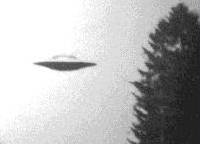Article/Document:
Cosmic Pro-Lifers
Kenneth Silber, TCS (Tech Central Station)
original source | fair use notice
Summary: Questions about extraterrestrial life - whether it exists, what it would be like, how to look for it - generate very little scientific consensus. Some scientists enthuse over the Search for Extraterrestrial Intelligence, which listens for radio signals from alien civilizations. Others propound the Rare Earth Hypothesis, which states that an array of unusual factors allowed complex life to arise here, and that any life we find elsewhere would likely be as simple as bacteria.
Questions about extraterrestrial life - whether it exists, what it would be like, how to look for it - generate very little scientific consensus. Some scientists enthuse over the Search for Extraterrestrial Intelligence, which listens for radio signals from alien civilizations. Others propound the Rare Earth Hypothesis, which states that an array of unusual factors allowed complex life to arise here, and that any life we find elsewhere would likely be as simple as bacteria.
Two new books provide some interesting perspective on the debate. Both could be described as "pro-life" (in the cosmic sense), though they approach the subject from different angles. What Does a Martian Look Like?: The Science of Extraterrestrial Life, by biologist Jack Cohen and mathematician Ian Stewart (published by John Wiley & Sons), presents a view that alien life is probably not only common but also truly alien. Cohen and Stewart castigate scientists for a lack of imagination about the possible forms and habitats of extraterrestrial life.
Origins of Existence: How Life Emerged in the Universe, by physicist Fred Adams (Free Press), presents a broad-canvas picture of a universe that's congenial to at least one type of life (the carbon-based, water-dependent life that exists on Earth). Adams describes how the laws of physics give rise to structures such as galaxies, stars and planets, which are prerequisites for such life. He argues that the conditions for life do not appear unique to Earth, and may become yet more widespread in future stellar and galactic evolution.
Both books discuss the apparent "fine tuning" by which our universe's laws appear to be precisely right for life. If physical constants such as the mass of the proton or the strength of the electromagnetic force were slightly different, none of us would be here. This is sometimes presented as evidence of intelligent design. But it could also mean that there are multiple universes, or that our conception of life is too narrow, or that the calculations of what the universe would be like with different physics are unduly simplistic. Adams emphasizes multiple universes, whereas Cohen and Stewart focus on the other objections.
Leaving aside the question of what if any life would exist under other physical laws, there remains the question of what kind of life is possible in the universe we actually inhabit. Here, Cohen and Stewart are harshly critical of "astrobiology," the interdisciplinary scientific field that examines the possibility of extraterrestrial life. They argue that astrobiologists are too focused on looking for something similar to life on Earth and fail even to grasp the diversity of past and present terrestrial life. The authors seek to change not only the focus but the name; they call for a new field known as "xenoscience."
What Does a Martian Look Like? intersperses synopses of various science-fiction novels with Cohen and Stewart's own speculations. They discuss such possibilities as blimp-like creatures floating amid the clouds of Jupiter, or even more exotic entities such as intelligent magnetic vortices living on the surface of a star. They criticize assumptions built into the Rare Earth Hypothesis, such as that life could evolve only in a narrow "habitable zone" that's not too close or too far from a star. They note that such habitability could also occur in far-flung planets or moons that have their own heat sources, or in bodies that orbit close to a star but do not rotate (there would be a warm region between the hot hemisphere facing the star and the cold one facing away).
Yet Cohen and Stewart also express skepticism toward the Search for Extraterrestrial Intelligence. Intelligent aliens, they argue, would be difficult or impossible for humans to understand, are unlikely to use radio communication, and probably would be cautious about advertising their existence. Moreover, any messages the extraterrestrials are sending among themselves would likely be encrypted to sound like random noise.
A remarkable aspect of astrobiology, or xenoscience if you prefer, is that nobody really knows anything. Even though Cohen and Stewart's arguments are often cogent, the Rare Earth Hypothesis might still be correct, or the Search for Extraterrestrial Intelligence might be on the right track. Similarly, Adams could be right in his portrayal of a universe basically friendly to life, but this might also be a universe that just barely tolerates life. Nonetheless, the subject is compelling and thought-provoking. And by contemplating what may be out there, we can also learn more about ourselves.
As Cohen and Stewart point out, extraterrestrial life may have evolved under conditions humans would find extremely hostile. The converse is true as well. Aliens might be horrified by an environment dominated by, as the authors put it, "sleeting electromagnetic radiation, a corrosive oxygen atmosphere, and that terrible universal solvent, hydrogen monoxide, sloshing all over the place." But for us, it's just a day on the beach.
Read more articles on this topic:






